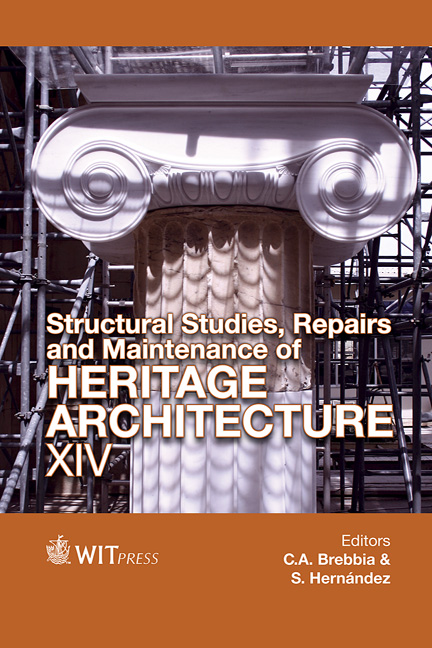Sustainable And Energy-efficient Rehabilitation Of The Former Hospital Of San Salvatore In L’Aquila
Price
Free (open access)
Transaction
Volume
153
Pages
12
Page Range
171 - 182
Published
2015
Size
2,068 kb
Paper DOI
10.2495/STR150151
Copyright
WIT Press
Author(s)
P. De Berardinis, L. Capannolo, C. Marchionni
Abstract
The topic of sustainable rehabilitation of historic buildings is currently really important in the town of L’Aquila. After the earthquake of 2009, the project aims in the field of energy efficiency and the use of innovative technologies and materials are integrated with the necessary reconstruction interventions and with the refurbishment of the heritage buildings.
The transition from a “traditional” to an eco-efficient building takes place more easily and with greater emphasis in the planning of new buildings, through the introduction of a high potential in terms of experimentation and applied research on building systems and components. The refurbishment of existing buildings raises several questions and presents considerable difficulties, especially when the intervention involves a building bearer of intrinsic meaning and historical, constructive and cultural values.
The former hospital of San Salvatore is a building complex located in the historic center of L’Aquila. It has been left devoid of any function since the end of the twentieth century, so it has undergone a gradual degradation, aggravated by the earthquake damage. The refurbishment of the building has affected the functional-spatial, figurative, energetic and structural aspects. The intervention mainly consists of the reuse of the building in order to create a university campus, in the extension of it through new elements that respect the original system, in the replacement of building elements affected by technological problems and in the integration of new elements in the pre-existing building, cooperating with it in terms of structural and energetic performance.
The main purpose of this paper is to define a methodological approach for the sustainable rehabilitation of the historic buildings, by retracing the steps of assessment and analysis addressed in the refunctionalization and energy-efficient rehabilitation of the former hospital of San Salvatore in L’Aquila.
Keywords
reuse, energy-efficient rehabilitation, built heritage, sustainability, innovative technologies




